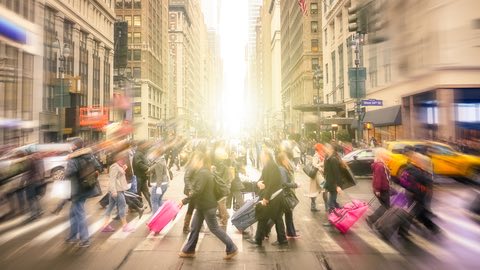
Six months into this century’s pandemic, we have all settled into what can only be called an uncomfortable uncertainty. While this is being experienced by all of us on a very personal level, it also holds true for our institutions – including our cities.
COVID-19 has magnified the urban butterfly effect – or how small changes in one system can have massive impact on much larger outcomes. In our digital reality, when those systems are disconnected, chaos has ensued. Transportation, education, healthcare, supply chains and even overall governance is more and more influenced by a technical agenda.
So what are cities and city leaders to do? It turns out that there are, in fact, choices about the way forward. Arundhati Roy describes the “Pandemic as a Portal” explaining that, “historically, pandemics have forced humans to break with the past and imagine their world anew. This one is no different. It is a portal, a gateway between one world and the next.”
She goes on to explain that how we react to the new and emerging reality is the most important choice we can make. When all seems out of control, we may not be able to determine the future, but we can impact how we prepare for it.
The Reset
In the early days of the pandemic, we all leapt into action, rapidly re-configuring systems to mitigate risk. Government was dealing with all-new issues such as how to conduct City Council meetings online, how to support an instantly-remote workforce, how to get information to an anxious public, how to support vulnerable communities who lack access to the online world, the list goes on and on.
Public sector champions pushed through and created laudable solutions. But six months in, it is clear that we all have to move beyond quick fixes. Short-term remedies must now translate into longer-term solutions. This requires a different mindset, new approaches and a new team to implement them.
So what happens beyond The Reset? City leaders essentially have two choices: resume or reboot.
The Desire to Resume to “Normal”
Wanting for things to return to a known, normalized state is natural. It feels powerless to see our small businesses suffer, renters evicted, large swaths of our neighborhoods disconnected. We long to return to our lives pre-pandemic and enjoy the freedoms we perhaps took for granted – hugs, handshakes, going to work, going to school, going anywhere.
Many cities will also want to return to the way things were. And to be fair, the system of government strives for stability. In times of less upheaval, city government does the yeoman’s work of civil service. But well-intentioned efforts can result in policies, regulations, departmental structures and programs that are mired in bureaucracy and appear to be disconnected from real-time need.
The reality check is proving that there is no going back. To choose the Resume path is to invite new suffering. We are at an inflection point where we have the opportunity to reboot, to refresh, to re-imagine.
The Reboot and a Role for Smart Cities
We must adjust and learn how to live in a constant state of disruption. Instead of consistency, we must build resiliency. Instead of a decade-long strategic plan, we must learn how to deliver shorter-term solutions driven by firmly held values and beliefs. It will require doing things very differently.
The Reboot approach implied a technical infusion. It requires a commitment to building out foundational infrastructure and sensor-enabled systems that are built to encourage new approaches. With this connected platform, solutions to civic and social challenges come more quickly because we have the data-driven insights to support them. This is the true hope and the potential promise of the human-centered smart city.
The Next Steps
So how do we do it? Moving forward on the Reboot option are the same 7 Steps to Building a Smarter Community: (1) Define your customer (your people) (2) Map your landscape (3) Define your problem (4) Prioritize your focus areas (5) Identify solutions and test (6) Implement solutions (7) Measure and adapt.
If that sounds daunting, the good news is that government does not have to do it alone. The Smart City Ecosystem is designed for collaboration, emphasizing what each sector has to offer as a way of filling the gaps.
The New Reality
The only known from now on is the unknown. That is a difficult reality to sit with, even for those who thrive on solving intractable problems where there may seem to be few solutions. We do have the option to embrace this era – as Arundhati Roy suggests – create a better reality. But we all must come to grips with this new truth and support each other – especially our community leaders – in forging the next steps. Our cities – and all who live in them – depend on it.